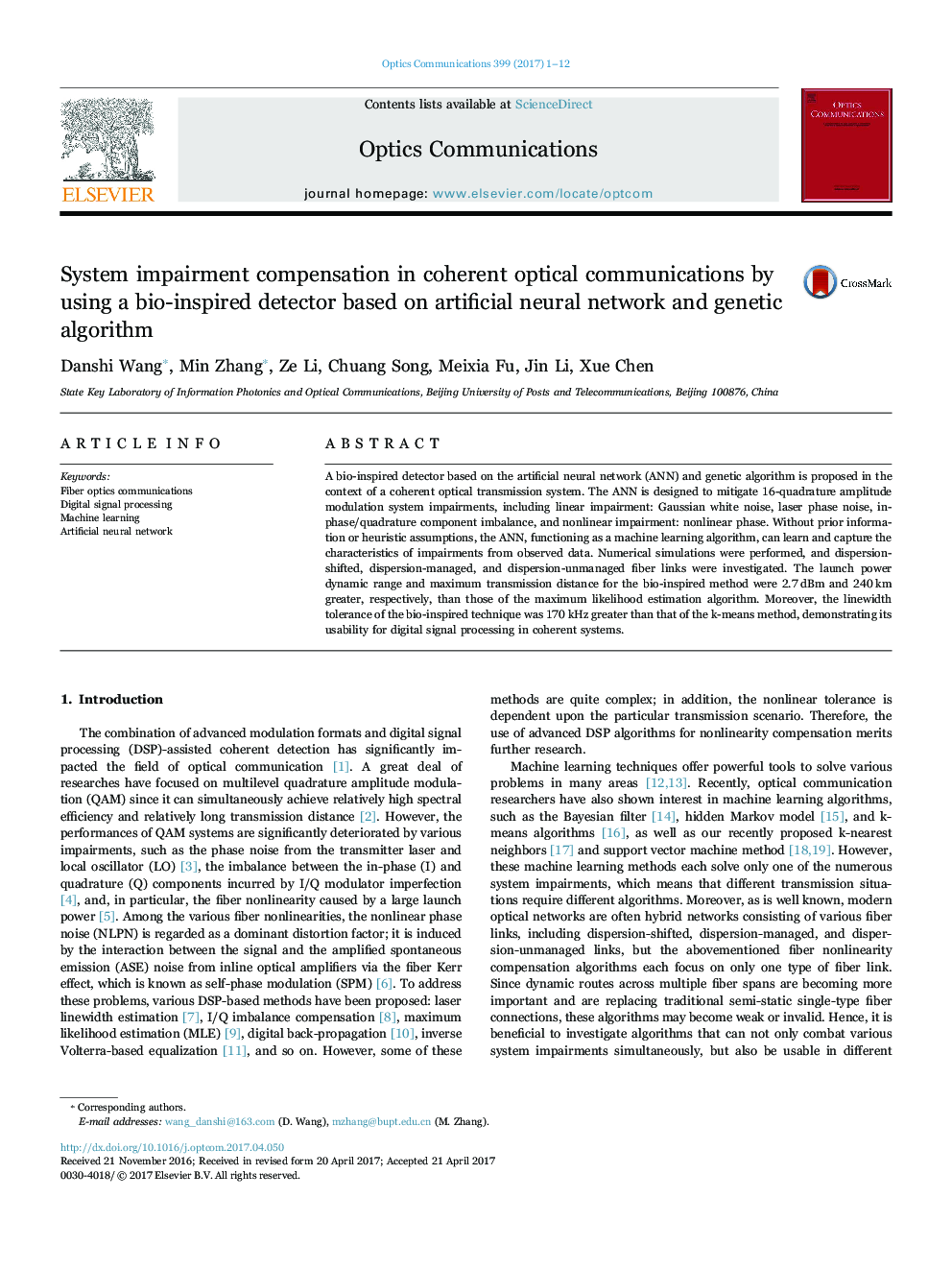| Article ID | Journal | Published Year | Pages | File Type |
|---|---|---|---|---|
| 5449348 | Optics Communications | 2017 | 12 Pages |
Abstract
A bio-inspired detector based on the artificial neural network (ANN) and genetic algorithm is proposed in the context of a coherent optical transmission system. The ANN is designed to mitigate 16-quadrature amplitude modulation system impairments, including linear impairment: Gaussian white noise, laser phase noise, in-phase/quadrature component imbalance, and nonlinear impairment: nonlinear phase. Without prior information or heuristic assumptions, the ANN, functioning as a machine learning algorithm, can learn and capture the characteristics of impairments from observed data. Numerical simulations were performed, and dispersion-shifted, dispersion-managed, and dispersion-unmanaged fiber links were investigated. The launch power dynamic range and maximum transmission distance for the bio-inspired method were 2.7Â dBm and 240Â km greater, respectively, than those of the maximum likelihood estimation algorithm. Moreover, the linewidth tolerance of the bio-inspired technique was 170Â kHz greater than that of the k-means method, demonstrating its usability for digital signal processing in coherent systems.
Keywords
Related Topics
Physical Sciences and Engineering
Materials Science
Electronic, Optical and Magnetic Materials
Authors
Danshi Wang, Min Zhang, Ze Li, Chuang Song, Meixia Fu, Jin Li, Xue Chen,
